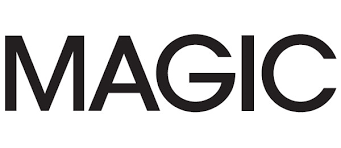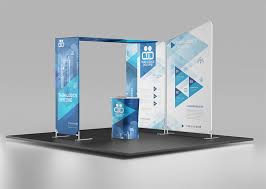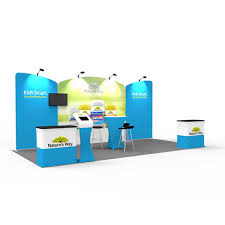Exploring SupplySide West 2023: The Ultimate Event for the Health and Nutrition Industry
SupplySide West 2023 is gearing up to be one of the most anticipated events in the health and nutrition industry. Scheduled to take place from October 17-21, 2023, at the Mandalay Bay Convention Center in Las Vegas, this event promises to bring together professionals, suppliers, and experts from around the world.
As a premier trade show focused on ingredients and solutions for the health and nutrition market, SupplySide West offers a unique platform for networking, learning about industry trends, and discovering new products. With over 17,000 attendees and more than 1,300 exhibitors expected to participate, this event is a must-attend for anyone involved in the health and nutrition sector.
From innovative ingredients to cutting-edge technologies, SupplySide West showcases the latest advancements in the industry. Attendees can explore a wide range of products and services across various categories such as dietary supplements, functional food and beverages, personal care products, and more.
In addition to the bustling exhibition floor, SupplySide West also features educational sessions led by industry experts. These sessions cover a diverse range of topics including market trends, regulatory updates, formulation strategies, and consumer insights. Whether you’re looking to expand your knowledge or stay ahead of the curve, these sessions offer valuable insights that can help drive your business forward.
Networking is another key highlight of SupplySide West. With numerous opportunities to connect with industry peers, suppliers, and potential partners, attendees can forge valuable relationships that can lead to new collaborations and business opportunities.
Whether you’re a seasoned professional or just starting out in the health and nutrition industry, SupplySide West 2023 offers something for everyone. Mark your calendars for this exciting event and get ready to immerse yourself in all things health and nutrition!
Everything You Need to Know About SupplySide West 2023: FAQs on Dates, Location, Attendance, Exhibitors, Products, Education, Networking, Fees, and Who Should Attend
- When and where is SupplySide West 2023 taking place?
- How many attendees are expected at SupplySide West 2023?
- How many exhibitors will be participating in SupplySide West 2023?
- What are the main categories of products showcased at SupplySide West 2023?
- What types of educational sessions can attendees expect at SupplySide West 2023?
- What networking opportunities are available at SupplySide West 2023?
- Is there a registration fee to attend SupplySide West 2023?
- Who should attend SupplySide West 2023?
When and where is SupplySide West 2023 taking place?
SupplySide West 2023 is scheduled to take place from October 17-21, 2023, at the Mandalay Bay Convention Center in Las Vegas. This highly anticipated event in the health and nutrition industry will bring together professionals, suppliers, and experts from around the world to explore the latest trends, products, and innovations in the market. Mark your calendars for this exciting opportunity to network, learn, and discover all that SupplySide West has to offer!
How many attendees are expected at SupplySide West 2023?
SupplySide West 2023 is anticipated to draw over 17,000 attendees from various sectors of the health and nutrition industry. With professionals, suppliers, and experts converging at the Mandalay Bay Convention Center in Las Vegas from October 17-21, 2023, attendees can expect a vibrant environment teeming with networking opportunities, educational sessions, and a diverse range of innovative products and services on display. This significant turnout underscores the event’s reputation as a premier gathering for those seeking to stay informed about the latest trends and developments in the market.
How many exhibitors will be participating in SupplySide West 2023?
One of the most frequently asked questions about SupplySide West 2023 is how many exhibitors will be participating in the event. With over 1,300 exhibitors expected to showcase their products and services, attendees can look forward to a diverse and comprehensive exhibition floor that covers a wide range of categories within the health and nutrition industry. From established industry players to innovative startups, the lineup of exhibitors at SupplySide West 2023 promises to offer something for everyone, making it a must-visit event for professionals looking to stay at the forefront of industry trends and developments.
What are the main categories of products showcased at SupplySide West 2023?
At SupplySide West 2023, attendees can expect to explore a diverse range of product categories across the health and nutrition industry. From dietary supplements to functional food and beverages, personal care products, and innovative ingredients, the exhibition floor will showcase a wide array of offerings. Whether you’re interested in discovering the latest trends in wellness products or seeking cutting-edge solutions for your business, SupplySide West 2023 will feature products that cater to various needs and interests within the industry.
What types of educational sessions can attendees expect at SupplySide West 2023?
Attendees at SupplySide West 2023 can expect a diverse range of educational sessions covering various aspects of the health and nutrition industry. From market trends and regulatory updates to formulation strategies and consumer insights, the educational sessions are designed to provide valuable insights and knowledge to professionals in the field. Whether you’re looking to stay informed about the latest developments or seeking practical advice to enhance your business, the sessions at SupplySide West 2023 offer a wealth of information that can help attendees navigate the ever-evolving landscape of the health and nutrition market.
What networking opportunities are available at SupplySide West 2023?
At SupplySide West 2023, attendees can take advantage of a wide array of networking opportunities to connect with industry peers, suppliers, and potential partners. From dedicated networking events and receptions to informal meet-and-greet sessions on the exhibition floor, there are ample chances to build valuable relationships and explore potential collaborations. Whether you’re looking to expand your professional network, exchange ideas with like-minded individuals, or discover new business opportunities, SupplySide West offers a vibrant platform for fostering connections within the health and nutrition industry.
Is there a registration fee to attend SupplySide West 2023?
Yes, there is a registration fee to attend SupplySide West 2023. The registration fee allows attendees access to the exhibition floor, educational sessions, networking events, and other valuable resources offered during the event. Pricing details and registration information can be found on the official SupplySide West website. Make sure to secure your spot early to take advantage of any early bird discounts or special offers available for attendees.
Who should attend SupplySide West 2023?
SupplySide West 2023 is a must-attend event for professionals across the health and nutrition industry. Whether you are a supplier, manufacturer, distributor, formulator, marketer, or researcher, this event offers valuable insights, networking opportunities, and access to the latest products and trends in the market. Attendees looking to stay informed about industry developments, connect with key players in the field, and discover innovative solutions for their businesses will find immense value in participating in SupplySide West 2023.










